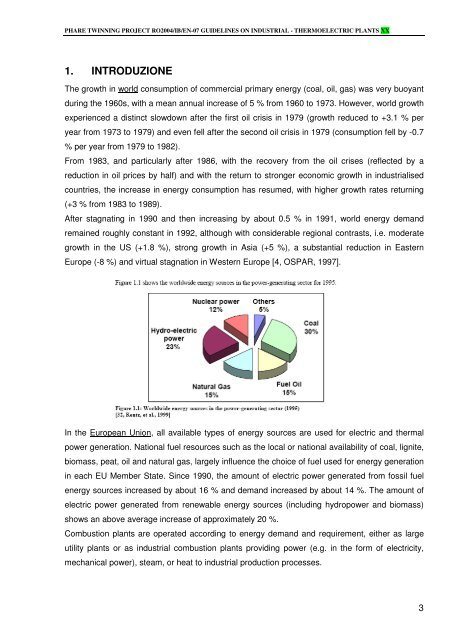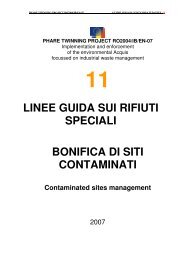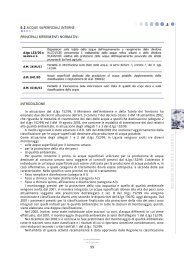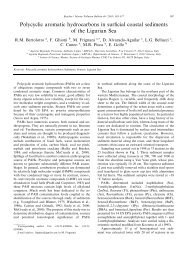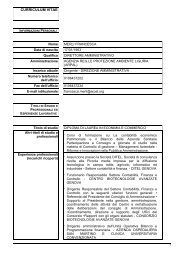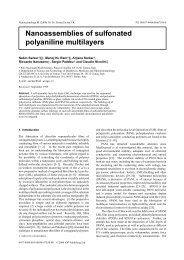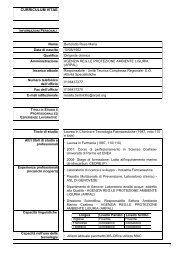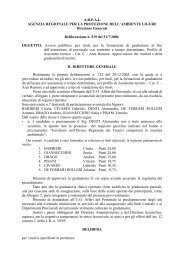Rifiuti da centrali termoelettriche - ARPAL
Rifiuti da centrali termoelettriche - ARPAL
Rifiuti da centrali termoelettriche - ARPAL
Create successful ePaper yourself
Turn your PDF publications into a flip-book with our unique Google optimized e-Paper software.
PHARE TWINNING PROJECT RO2004/IB/EN-07 GUIDELINES ON INDUSTRIAL - THERMOELECTRIC PLANTS XX<br />
1. INTRODUZIONE<br />
The growth in world consumption of commercial primary energy (coal, oil, gas) was very buoyant<br />
during the 1960s, with a mean annual increase of 5 % from 1960 to 1973. However, world growth<br />
experienced a distinct slowdown after the first oil crisis in 1979 (growth reduced to +3.1 % per<br />
year from 1973 to 1979) and even fell after the second oil crisis in 1979 (consumption fell by -0.7<br />
% per year from 1979 to 1982).<br />
From 1983, and particularly after 1986, with the recovery from the oil crises (reflected by a<br />
reduction in oil prices by half) and with the return to stronger economic growth in industrialised<br />
countries, the increase in energy consumption has resumed, with higher growth rates returning<br />
(+3 % from 1983 to 1989).<br />
After stagnating in 1990 and then increasing by about 0.5 % in 1991, world energy demand<br />
remained roughly constant in 1992, although with considerable regional contrasts, i.e. moderate<br />
growth in the US (+1.8 %), strong growth in Asia (+5 %), a substantial reduction in Eastern<br />
Europe (-8 %) and virtual stagnation in Western Europe [4, OSPAR, 1997].<br />
In the European Union, all available types of energy sources are used for electric and thermal<br />
power generation. National fuel resources such as the local or national availability of coal, lignite,<br />
biomass, peat, oil and natural gas, largely influence the choice of fuel used for energy generation<br />
in each EU Member State. Since 1990, the amount of electric power generated from fossil fuel<br />
energy sources increased by about 16 % and demand increased by about 14 %. The amount of<br />
electric power generated from renewable energy sources (including hydropower and biomass)<br />
shows an above average increase of approximately 20 %.<br />
Combustion plants are operated according to energy demand and requirement, either as large<br />
utility plants or as industrial combustion plants providing power (e.g. in the form of electricity,<br />
mechanical power), steam, or heat to industrial production processes.<br />
3


